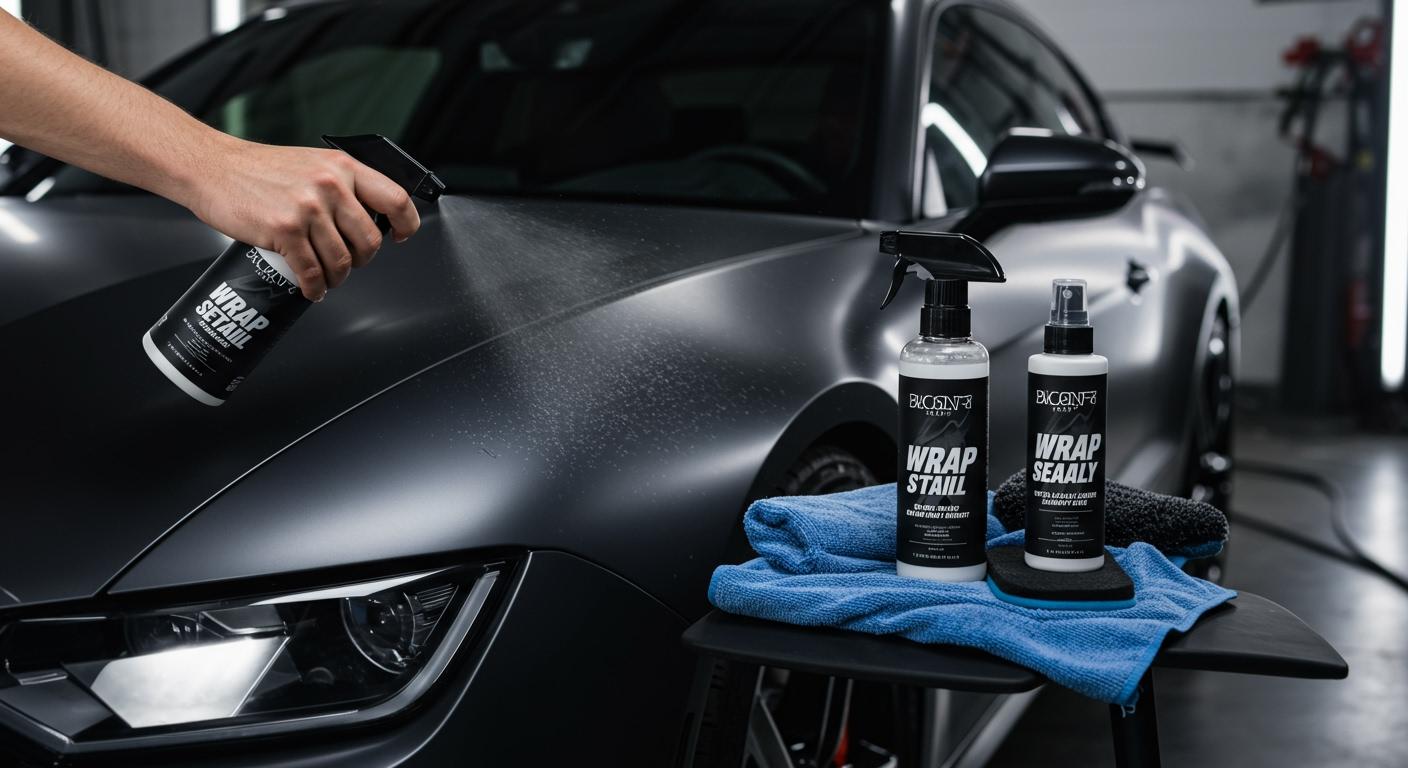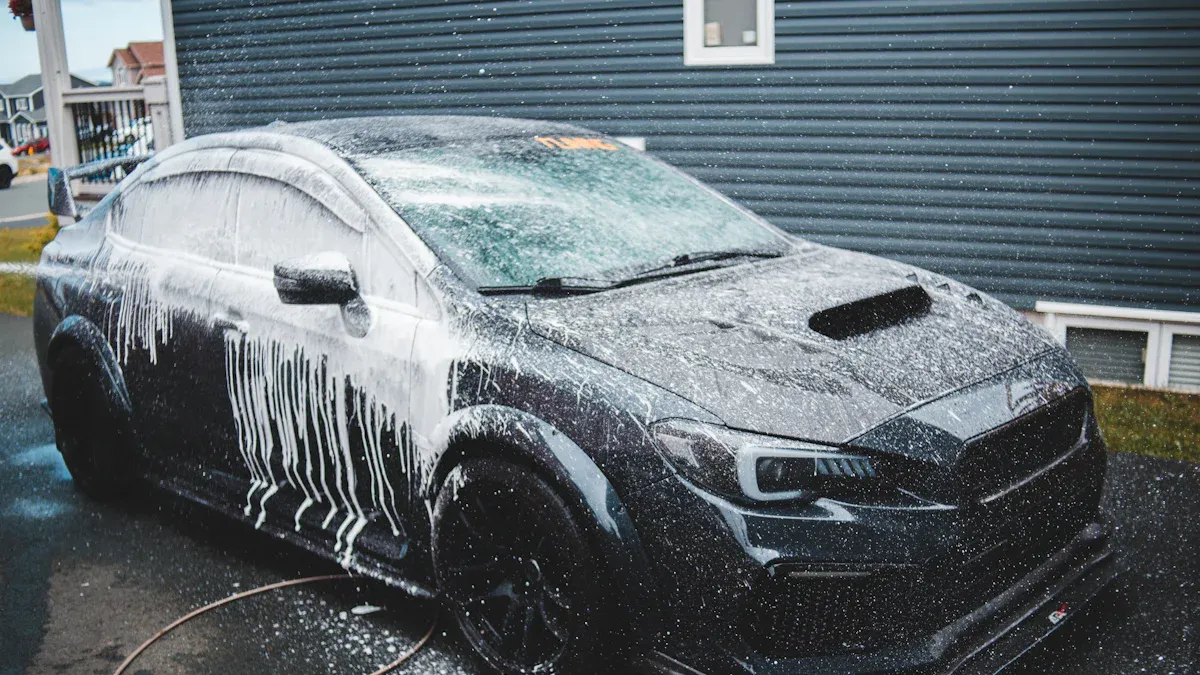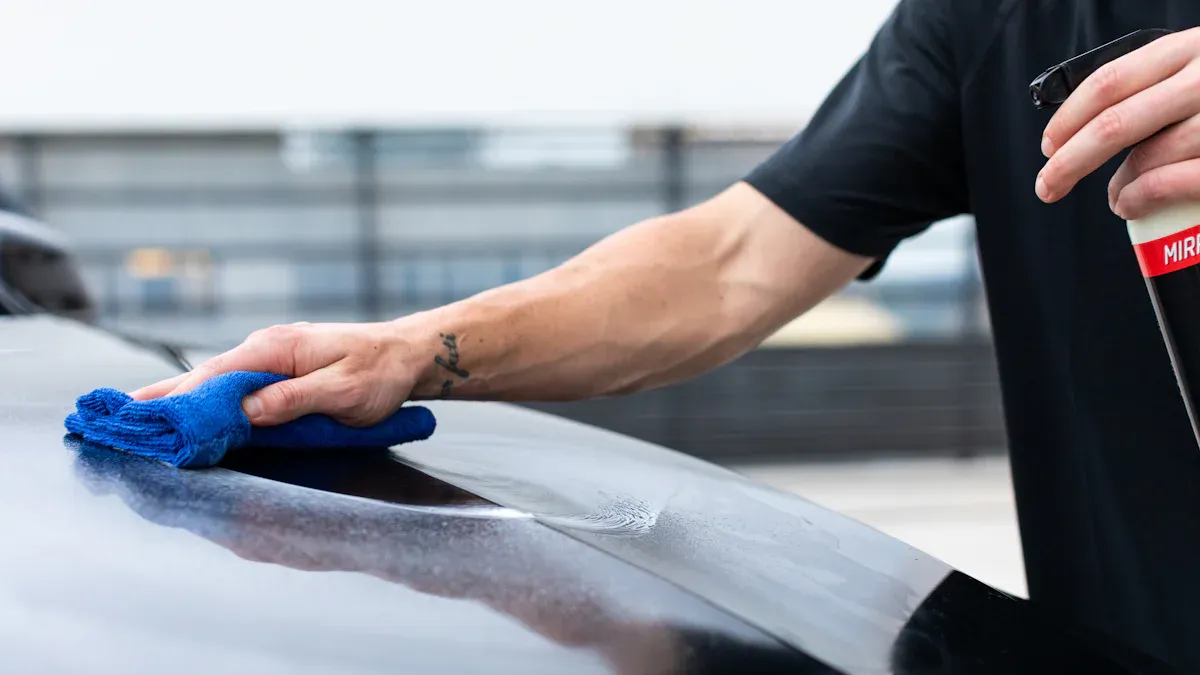
If you wrap your car with car vinyl wrap, like the Best Ravoony Matte Romanee Red Car Wrap, a matte car wrap, you should learn how to maintain it. Proper car wrap maintenance protects your investment. Good care helps your wrap last 5-7 years. Bad habits can shorten its life significantly.
Key Takeaways
- Use special pH-neutral soap to wash your car wrap. This keeps the wrap safe and clean.
- Use a quick detailer spray for daily cleaning. It removes dust and fingerprints without harming the wrap.
- Apply a sealant to your car wrap. This protects it from dirt and water, making it last longer.
Product 1: pH-Neutral Car Wrap Shampoo

Why It's Essential
You need the right soap to clean your vinyl wrap safely. Standard car shampoos can be too harsh. Their acidic or alkaline formulas can strip protective layers, cause discoloration, and shorten your wrap's lifespan. A pH-neutral shampoo, with a balanced pH level of 7, cleans effectively without causing damage. It gently lifts dirt and grime while preserving the wrap's finish and integrity.
This approach is crucial because some harsh cleaners can break down the vinyl material itself. Using a wrap-specific shampoo ensures you remove contaminants without harming the film.
Tip: Always choose a shampoo labeled as "pH-neutral" or "wrap-safe" to protect your investment.
Here is a quick comparison:
| Feature | pH-Neutral Wrap Shampoo | Traditional Car Shampoo |
|---|---|---|
| pH Level | Neutral (pH 7) | Can be acidic or alkaline |
| Impact on Wrap | Safe, preserves integrity | Can degrade material |
| Residue | Rinses clean | May leave dulling residue |
| Protection | Maintains existing sealants | Can strip waxes and coatings |
How to Use It
Follow the two-bucket wash method for the best results. This technique prevents you from rubbing dirt back onto your car.
- Fill one bucket with your shampoo solution and a second with plain water.
- Rinse the vehicle thoroughly with water to remove loose dirt.
- Wash the wrap from top to bottom using a microfiber wash mitt.
- Rinse your mitt in the plain water bucket before reloading it with soap.
- Rinse the entire vehicle completely and dry it with high-quality microfiber towels.
Product 2: Wrap-Specific Quick Detailer
Why You Need It
A quick detailer is your best tool for daily upkeep. You can use it to safely remove light dust, fingerprints, and water spots between full washes. It acts as a protective shield for your wrap. Many detailers contain UV blockers and special ingredients that guard against minor scratches and environmental damage. Some even use SiO2 (silicon dioxide) to form an invisible, slick layer that repels water and dirt.
Using the right detailer is especially important for matte and satin finishes. Standard products can add gloss, leaving shiny patches or streaks that ruin the unique texture. A wrap-specific formula cleans effectively while preserving your wrap's intended look.
| Finish Type | Risk of Using Wrong Detailer |
|---|---|
| Matte/Satin | Creates unwanted shiny spots |
| Gloss | Can leave a hazy residue |
| All Wraps | May not offer proper UV protection |
How to Apply It
Applying a quick detailer is simple and fast. You just need the spray and two clean microfiber towels.
- Work in a shaded area on a cool surface.
- Lightly mist one panel or small section of your vehicle.
- Gently wipe the area in one direction with your first microfiber towel to lift the dirt.
- Use your second, dry microfiber towel to lightly buff the area to a clean, uniform finish.
Pro Tip: 💡 Never apply pressure when wiping. Let the product and the microfiber towel do the work to avoid creating shiny spots on matte finishes.
Product 3: Sealant for Vinyl Wraps

The Importance of a Sealant
Think of a sealant as your wrap's invisible armor. Applying a sealant creates a protective, water-repelling (hydrophobic) layer. It works by filling in microscopic imperfections on the vinyl's surface, making it incredibly smooth. This flat surface prevents water, dirt, and oils from sticking. Instead, water beads up and rolls right off, taking contaminants with it and reducing water spots.
A quality sealant does more than just repel grime. It actively protects your investment.
- 💧 Repels Contaminants: The hydrophobic surface rejects water, dirt, and road film.
- ☀️ Nourishes Vinyl: Special polymers bond with the vinyl to help prevent cracking and fading from UV exposure.
- ✨ Enhances Finish: It adds a layer of clarity and depth to both gloss and matte wraps without unwanted shine.
Application Steps
Proper preparation is key for the best results. Before applying HALO, you must ensure the surface is perfectly clean so the coating can bond correctly.
- Thoroughly wash and dry the vehicle using a pH-neutral shampoo.
- Degrease the surface to remove any remaining oils or residues.
- Wipe the area with a diluted Isopropyl Alcohol (IPA) solution. Gtechniq recommends their Panel Wipe for this step to guarantee a pristine surface.
Product 4: Waterless Wash Solution
When to Use It
A waterless wash solution is your go-to for cleaning your wrap when you lack access to a hose or want to save water. You can use it to handle light to moderate dirt, dust, or grime left after a rainstorm. This method is perfect for apartment dwellers or for quick cleanups.
However, you should not use a waterless wash for heavy contamination. If your car is covered in caked-on mud, thick salt, or ash buildup, you need a traditional wash. Using a waterless product on heavy debris will drag the grit across your wrap and cause scratches.
Note: For matte or satin wraps, choose a waterless wash formula that contains no waxes or glossing agents to preserve the flat finish. Shiny wraps can handle formulas with added gloss enhancers.
Safe Washing Technique
The key to a safe rinseless wash is to use plenty of clean microfiber towels and no pressure.
- Mix the ONR solution in a bucket according to the product directions.
- Soak several microfiber towels in the bucket.
- Take one soaked towel, fold it into fourths, and gently wipe a small panel of your car in one direction. Do not scrub back and forth.
- Flip the towel to a clean side for the next pass. Once all sides are used, put the dirty towel aside.
- Immediately follow with a clean, dry microfiber towel to dry the section.
- Grab a new, clean towel from your solution bucket for the next panel and repeat the process.
Product 5: Towel
Towel Matters
You cannot complete your car wrap maintenance without the right towels. Using a poor-quality or dirty towel can easily damage your vinyl. Microfiber towels contain plastic, and a cheap or contaminated one will create micro-scratches on your wrap's delicate surface.
- Low-quality towels have abrasive fibers that can mar the finish.
- Grit trapped in a dirty towel will be dragged across the wrap, causing scratches.
- Traditional towels have stitched edges that can scratch the surface during buffing.
To avoid this, you should always use high-quality, edgeless microfiber towels. An edgeless design is created by cutting the towel with a laser or ultrasonic tool, which eliminates the hard, stitched border. This soft edge glides smoothly over the wrap, drastically reducing the risk of swirls and scratches.
FAQ
Can you use an automatic car wash?
You should avoid automatic car washes. The harsh brushes can scratch, lift, or peel your vinyl wrap. Always opt for a touchless wash or hand wash your vehicle instead.
How often should you wash a wrapped car?
You should wash your wrapped car every one to two weeks. This prevents dirt buildup. Clean off contaminants like bird droppings or tree sap immediately to avoid permanent damage.
How do you remove bird droppings or bugs?
You must clean them off immediately. 🧼
1.Soak the spot with a wrap-safe quick detailer.
2.Let it sit for a moment to soften the mess.
3.Gently wipe it away with a clean microfiber towel.


















0 Comments